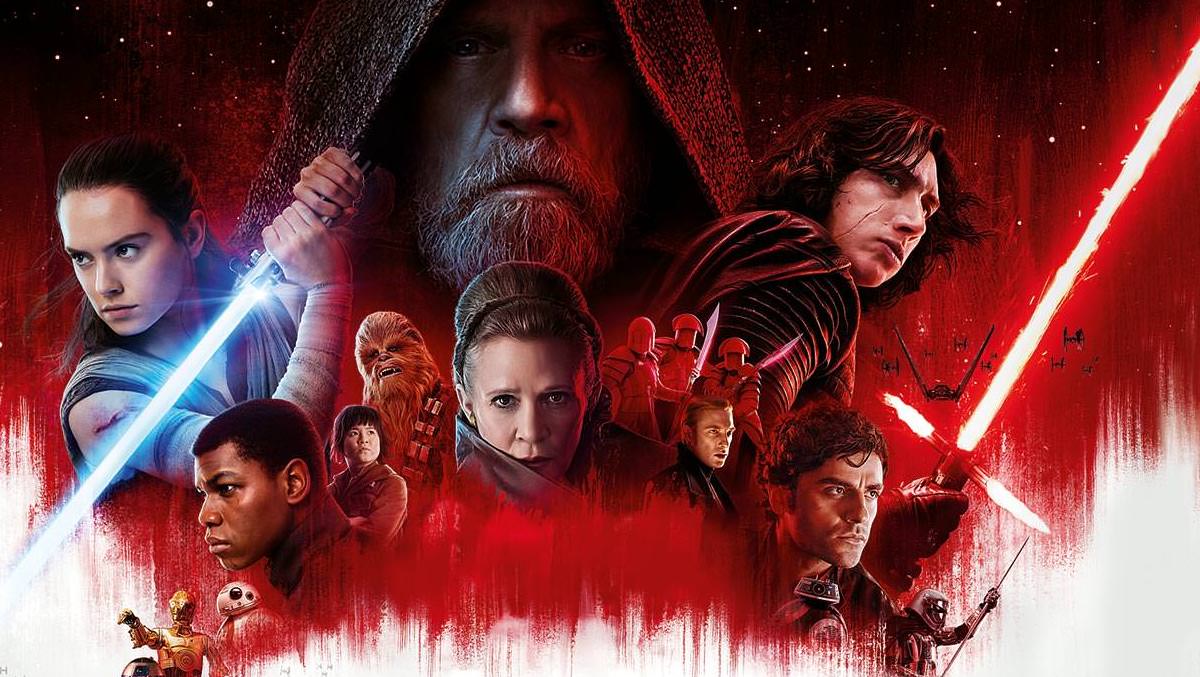
Star Wars: The Last Jedi reinvigorated my love for Star Wars by appealing to my writer’s soul. It not only includes beautifully drawn character arcs but those character arcs mirror and reflect back on each other.
Even better? Each character arc also syncs with the overriding theme of the movie, a theme that Rose states out loud in the third act:
“That’s how we’re gonna win. Not fighting what we hate, by saving what we love.”
WARNING: MAJOR THE LAST JEDI SPOILERS BELOW.
Luke Skywalker’s Character Arc
A New Hope: The Prototypical Hero’s Journey
If we’re going to talk character arcs, we have to talk the classic Hero’s Journey, of which Luke’s original story is a perfect example. That journey roughly consists of receiving a call to adventure, refusing that call, meeting the mentor, accepting the call, crossing the threshold (or point of no return to the ordinary world), a battle in the new world, tests, a dark moment, revitalization, a triumph, and then a final curtain with the status quo of the new world.
You can (and many people have) map out Luke’s initial adventure exactly along these lines. (Han gets a mini-arc in ANH as well, as he moves from cynicism to idealism–which is why it’s important he shoots only–but it’s not as clear as Luke’s.)
The Last Jedi: From Cynicism to Hope
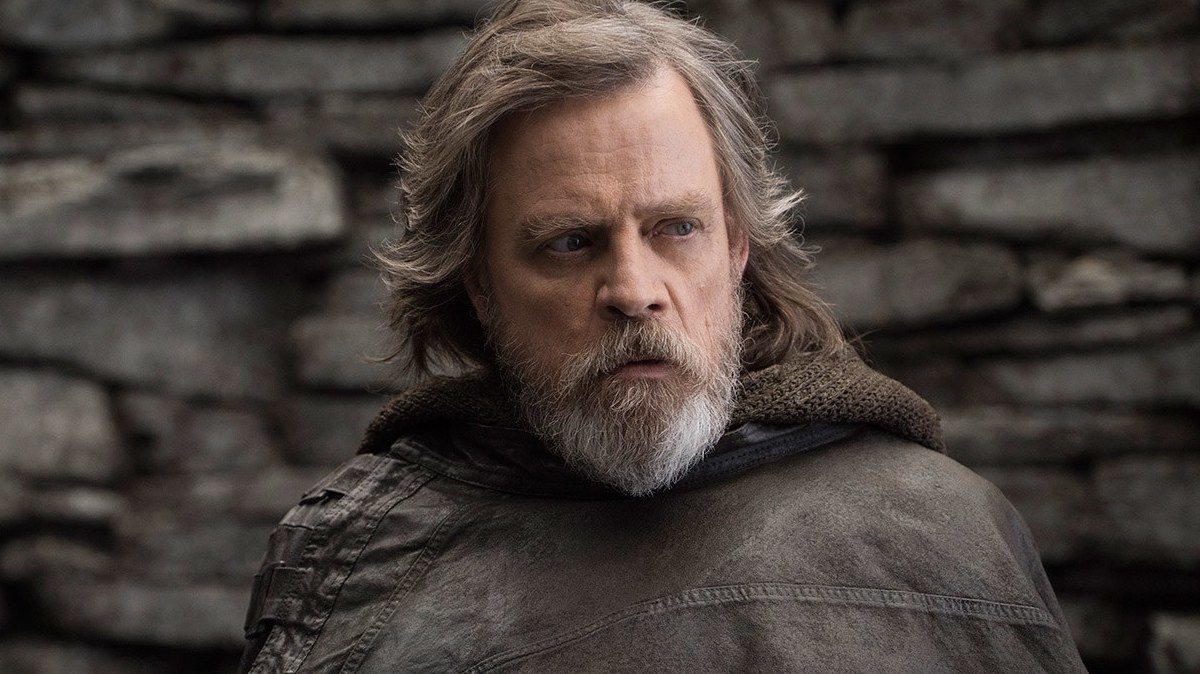
We find out nothing about what happened to Luke between Return of the Jedi and The Force Awakens except that Luke failed somehow in training Ben Solo and, as a consequence, Luke ran away from the rest of the universe. Huh? Is that the way we fix our mistakes, Luke? This is one of the many reasons I didn’t like TFA much. (Han ran away too but we’re talking about Luke here and Han’s running away is another strike against TFA for me. But I digress.)
What we find out in The Last Jedi is that Luke is hiding not because he failed but because he believes he will continue to fail and those failures will injure the very people he wants to save. He’s disillusioned and full of self-pity not just because he couldn’t stop Ben Solo from turning to the Dark Side but because Luke has lost faith in himself. He believes he’s not suitable to train any Jedi–and that, in any case, the Jedi create the very evil they claim to fight. (See Anakin Skywalker and Ben Solo.)
However, Luke’s mistakes are human mistakes. He had a moment of doubt because he’s an imperfect being. He failed at something, as people do. But failure and doubt are part of life and that’s the lesson Luke learns in this movie. He moves from despair to hope, from anger to love.
“The greatest teacher, failure is.”
He also learns that, while he can bear some of the responsibility for the actions of others, in the end, we choose our own destiny. Yes, he made a mistake with Ben but, as we see in Kylo’s scenes, Ben ultimately chooses to be what he is.
And, so, at the end, Luke choose to be a Jedi not because he feels the Jedi are righteous all the time but because doing your best to save what you love is worth it. I love that he snarks to Rey about how he cannot take on the entire First Order with a laser sword and, yet, later, that’s exactly what he does.
Luke’s story is a beautiful lesson for us older Star Wars fans, who can look back ruefully on our mistakes, and yet gain hope from his realization that while we are our mistakes, we are also our successes. Such is a life well lived.
Rey: Accepting Her Own Truth
The beauty of Rey’s character arc is that it most closely resembles the two people she interacts with most: Luke and Kylo Ren. If Luke’s original story was the classic hero’s journey, Rey’s is the same, except it’s spread across two movies.
Rey has been accused of being a Mary Sue, a too good-to-be-true-character in TFA. I view those complaints as completely beside the point because the issue underlying them is that Rey never receives a full character arc in TFA.
Rey spends much of TFA refusing her call to action. Saying she’ll need to go back to Jakku, refusing the images on the lightsaber she picks up, refusing to accept she must move forward. Her big moment in TFA is when she accepts the call to action by picking up the lightsaber and fighting Kylo. That’s when she commits herself and moves to find a mentor. And then… the movie ends before she can complete the arc. (In contrast, Finn has a character arc in TFA but we’ll get to him.)
TLJ picks up Rey’s character arc and completes it. Rey deals with her mentor and must face the truth within herself. Her dark moment is the revelation of a sad fact she’s suppressed for years: her parents were nobodies and they’re not coming back for her. One of the reasons she’s drawn to Kylo Ren is he offers her a sense of belonging and mutual purpose, while Luke tells her the fight is not worth it.
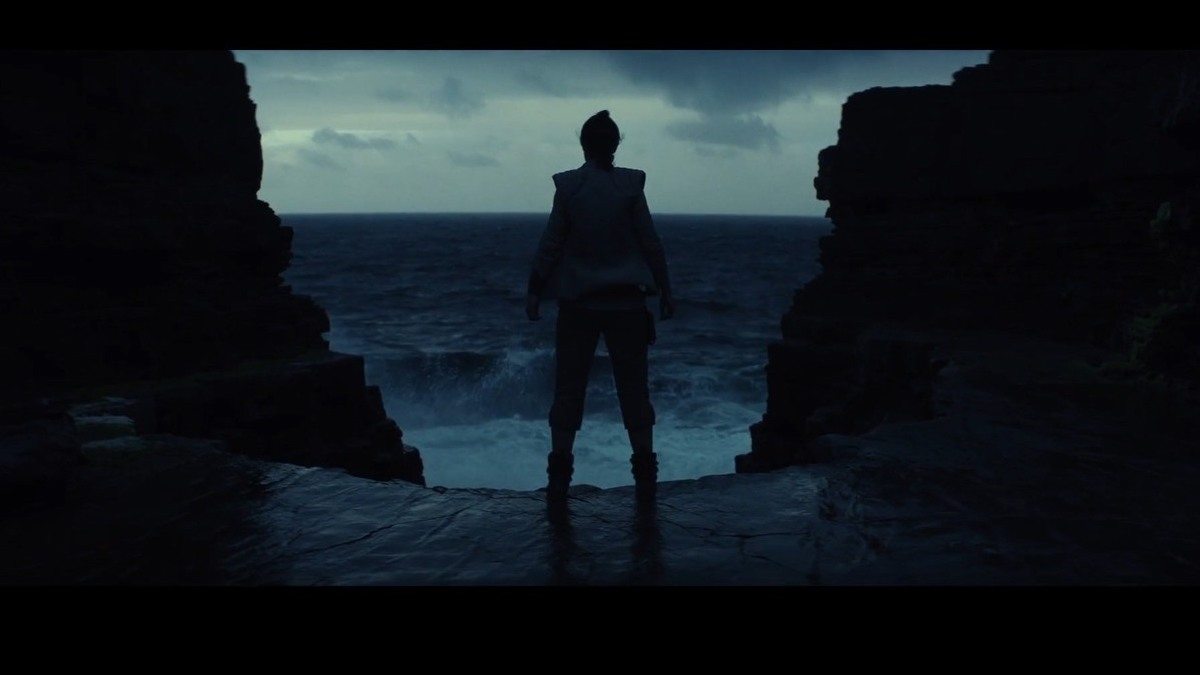
Her black moment is brief. It’s the moment when Kylo offers her the same choice Vader offered Luke in The Empire Strikes Back: join me and together we’ll rule the galaxy.
It’s also the choice the Emperor offers Luke in RotJ. One of the joys of TLJ is that it makes both the ESB and RotJ scenes retroactively more interesting because of the different choices made by those involved. (Vader, Luke, Emperor Palpatine versus Kylo, Rey, Snoke.)
Ben tells Rey she’s nothing but not to him. With him, she can be somebody. But she rejects what he offers.
Rey moves from hiding the truth about herself (even to herself) to believing in herself, no matter where she came from. She finds her place in all of this. She’s the Last Jedi.
Once again, we have dialogue that underlies this decision when Luke snarks at her that the Jedi just don’t move rocks and yet, to save the remaining Rebels, that’s exactly what Rey does.
Finn’s Character Arc: Believing in Rey to Believing in the Rebellion
Finn is the best character in TFA and one of the most unique in Star Wars, a brainwashed child soldier who finds he cannot kill. All he wants is to escape from a life of violence. But then Rey saves his life and he realizes he’d risk anything to save her. He even lies to the Rebels, claiming he can help them destroy the new planetary Death Star just to rescue Rey. He’s there for Rey. He’s learned that love can overcome fear.
But, still, as Finn wakes up in TLJ (a move, unfortunately, played for laughs, one of the few problems I had with the movie), Rey is still all he cares about. Yes, he’s concerned about the Rebel plight but Rey’s safety is paramount. He’ll desert them to make sure she’s safe. Rose calls him on it and stops him. When she, Poe, and Finn devise a plan that will save the Fleet and, as a result, save Rey, he’ll do that, too. But saving Rey is still at the top of his list.
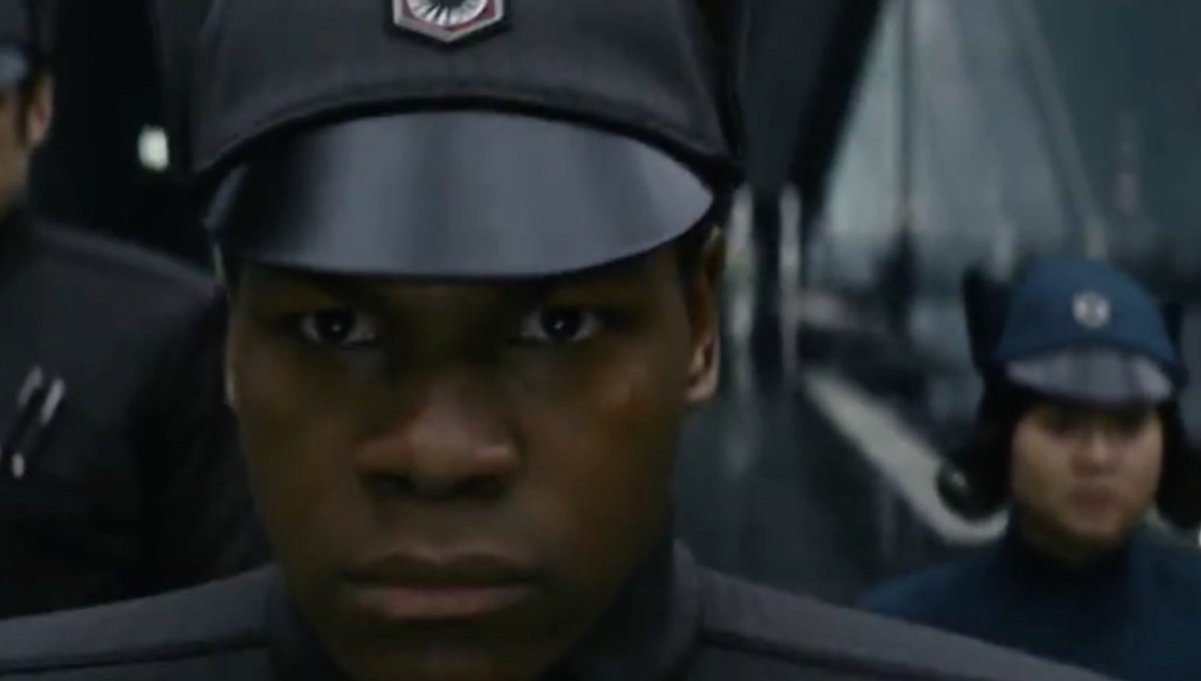
This is why the Canto Bight scene is important and critical to Finn. Yes, it’s a digression from the main plot, but it’s a digression important to Finn’s character arc. Canto Bight is where Finn realizes why the Rebellion exists and what it stands for. Here, Rose is his mentor, the one who points out that the bright lights and glitz of the casino is built on the backs of those who have been crushed. You take out Canto Bight from the movie and you take out Finn’s movement from caring about Rey to caring about the Rebellion. DJ is Finn’s selfishness taken to an extreme. DJ only cares about his own skin, and the implication is that’s what Finn could become if he doesn’t start caring about what the First Order does to everyone, not just Rey.
Finn has two big moments of realization. The first is when he accepts being called Rebel Scum by Phasma, during their climactic battle. (And, no, Phasma doesn’t get a character arc and I know people are upset about that.) The second is when he’s charging the cannon that will knock down the door and destroy what’s left of the Rebels. He’s accepted their fight and he’s willing to give his own life for it, the exact opposite of what his cautionary mirror-self, DJ, would do.
For a moment, I believed the movie would follow-through on his death because it was a natural climax to his character arc. But, no, thankfully, his mentor barrels in and saves him from his suicide run, pointing out that living and surviving is the best way to win.
Poe’s Character Arc: Action Isn’t Always a Solution
Poe has the most obvious arc and one that’s been somewhat criticized as being out of character from the Poe in TFA, though I don’t see how that criticism has any basis since both times we see Poe in TFA, he’s being a hotshot pilot who believes he can solve the problem by shooting at things.
Poe sees battle as glorious. He already exists in the new world of action, he’s already accepted the call to adventure, but what we see this time is how he learns that his solutions are sometimes wrong. He makes errors in judgment that lead to the deaths of many. His mirror is Vice Admiral Holdo, who cares nothing for glory, only in preserving lives. She makes the ultimate sacrifice but not for glory, but because there is no other choice possible.

That Holdo and the others died as a result of his decisions is a horrible realization for Poe and you can see him start to correct his way of leadership when he screams to Finn to stop the suicide run. It’s dialogue essentially identical to what Leia tells Poe in the suicidal bombing run in the beginning of the movie.
Leia completes Poe’s move to true leadership by saying (out loud!), “Follow him,” when Poe finds a way out of the tunnels.
I would hope the fallout of the deaths caused by Poe’s mistakes will be explored in the next movie, as we see him struggle to lead the Rebellion to victory.
Ben Solo to Kylo Ren
And, last but not least, we come to the villain of our piece, one Ben Solo. As he appeared in TFA, he was simply a corrupted, lost son of the Rebellion. Snoke has converted Ben to the Dark Side. Han goes to his son to bring him back to the side of the good but he fails. The corruption wins. Snoke wins.
Or does it?
What Ben Solo has is not a prototypical hero’s journey but a tragic villain’s arc, the one where the protagonist hits a fork in the road and chooses the wrong path.
I had no real interest in Kylo Ren from TFA. He was whiny and annoying and his corruption seemed just a rewrite of Anakin’s story. But while TFA offered us a glimpse of corrupted Kylo, TLJ shows us a Ben Solo with agency, the creation not of Snoke’s meddling but of his own horrible choices.
Ben was not corrupted by the Dark Side, he was fascinated by it, was found out, was frightened by his Uncle Luke’s momentary reaction, and responded by killing half of his fellow students. Ben doubles down on killing by committing genocide, as he is part of the destruction of six inhabited planets, and then he kills his father.
Even if Snoke is controlling him, that’s a whole lot of redemption needed to make up for those crimes.
It seems, for a bit, that Ben Solo might be interested in that redemption. He offers comradeship and more to Rey in their Force-Talk sessions. There is a physical and mental seduction element to those talks, for both of them, with Rey hoping to gain Ben’s trust, and Ben hoping for someone who finally understands him. And, in a way, Rey does gain his trust. To save her, he kills Snoke, a move almost no one saw coming.
There is that magnificent moment when Rey and Ben connect as they destroy Snoke’s guards. It’s the climax of the seduction. Rey’s thrilled because she thinks she has removed the corruption and Ben can be himself again.
But the tragic villain’s arc is that they make the wrong choice, every single time.
Rey wants to stop the assault and save the Rebels. Instead, Ben offers her the same choice that Darth Vader offered Luke in ESB: join me and we can rule the galaxy together. He’s made his choice: it’s for power.
The corruption was not all Snoke–it was inside him all along.
There is no more tragic scene in all of Star Wars than when Ben makes the choice to willingly walk the path of the Dark Side. It hurts because we see what he might have been. It hurts for Rey because she cared about Ben. But she makes her choice too, they battle over who should have the lightsaber, and literally rip it apart.
Rey will be a Jedi in the light. Ben is fully Kylo Ren, determined to become an Emperor and rule the galaxies.
For those who are Kylo/Rey shippers, I can’t see it. Kylo Ren has such a perfect moment of descent into villainy that he should be beyond redemption.
He’s made his choice.
All the Character Arcs Reflect the Theme
The amazing depth of character and theme in TLJ is underscored by how the dialogue and actions reinforce them. Kylo Ren orders the destruction of Luke and the Millennium Falcon. Kylo wants to destroy what he hates. “The Empire, your parents, the Resistance, the Sith, the Jedi… let the past die. Kill it, if you have to. That’s the only way to become what you are meant to be.”
This is the exact opposite of what Rose says to Finn about saving what you love.
Poe learns to value life (saving what you love) over glory. Luke comes to his final realization that, once again, he’s given hope to a desperate galaxy. Finn is committed to saving those he loves, and whether he loves Rey or Rose more, well, it’s immaterial because they’re both part of the Rebellion now.
And Rey is the last Jedi, the light at the dawn, despite having come from nothing and nowhere. She chooses to save what she loves, over and over.
Yes, this movie may have plot holes but its characters and themes may have the most depth of any Star Wars movie. It has moved to the same level as the original in my eyes, something I never thought possible.
My only slight niggle about the character arcs is that Leia doesn’t truly receive one.
Luke’s life comes full cycle, as the visions of twin suns indicate at his entry into the Force. But Leia never got the story she deserved in the original trilogy, the one that focused on her recovery from the tragedy of Alderaan. We never see her struggle with her own doubts and fears and triumph in the original trilogy. (You can see some of that in the prose books that are part of this new universe but it’s not quite the same.)
It’s clear from TLJ that the next movie was set up to Leia’s, as TFA was Han’s, and TLJ was Luke’s. But Carrie Fisher’s death at far too young an age has made that impossible.
But perhaps that’s for the best.
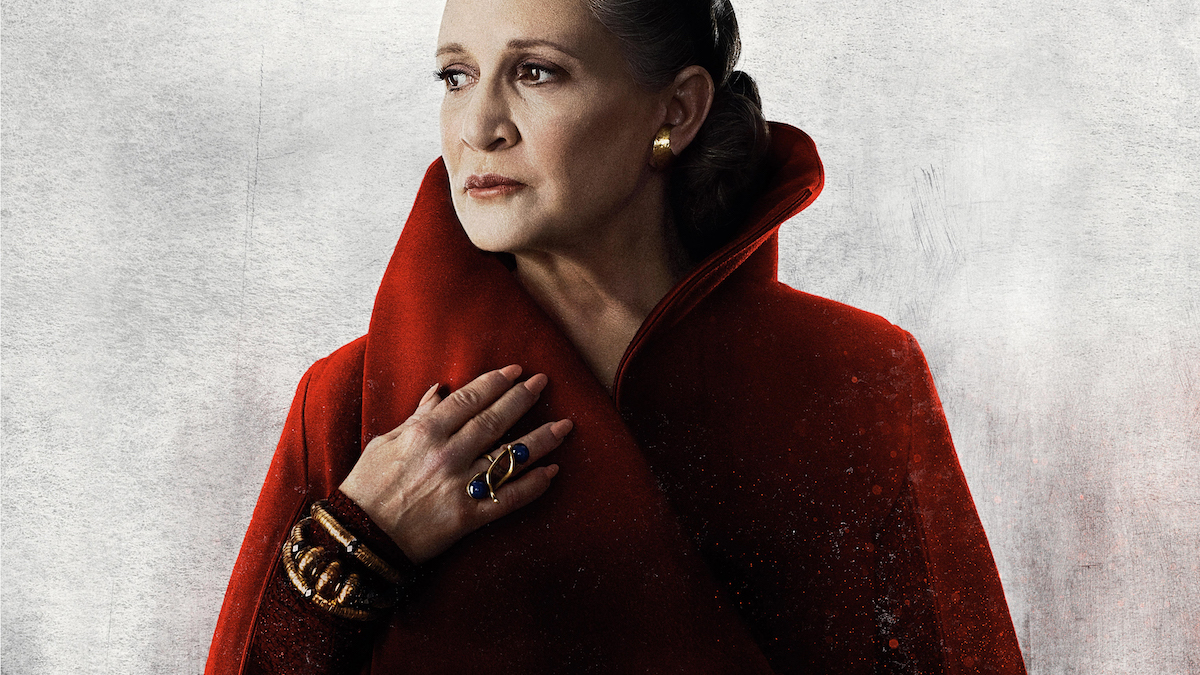
Leia Organa, Princess of Alderaan, General of the Resistance, the symbol of hope, the one who refuses to die, has always been a pure force of nature.
“Hope is like the sun. If you only believe it when you see it, you’ll never make it through the night.”

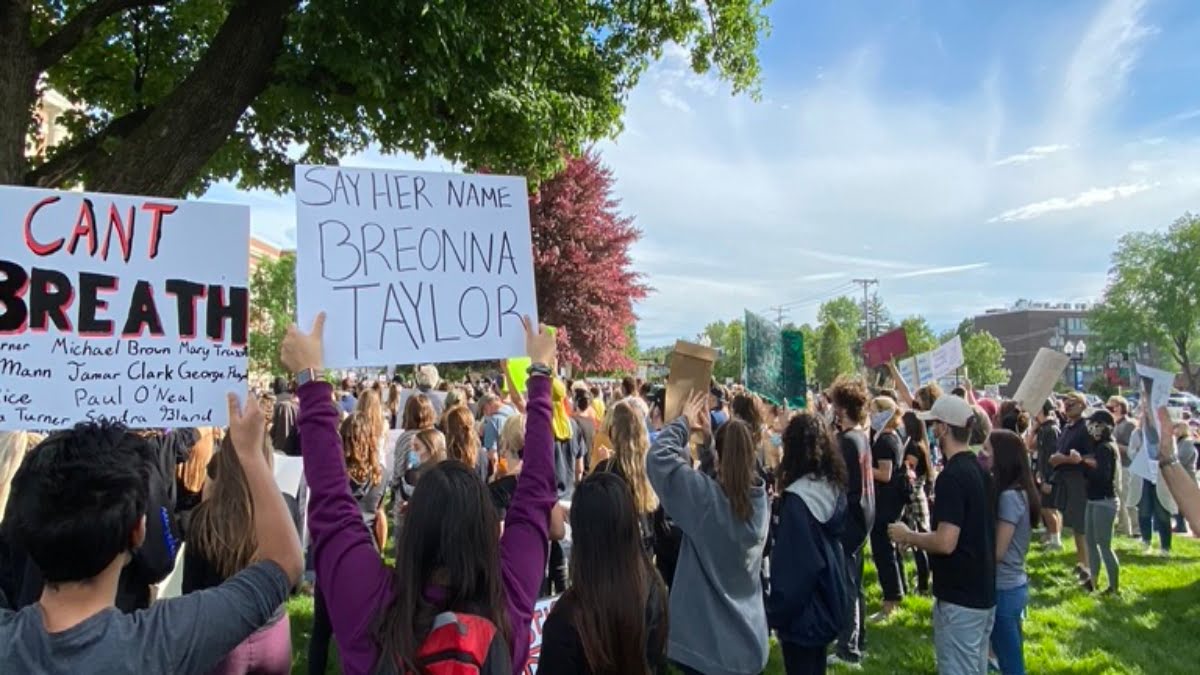

Beautifully stated, on all counts. Loved your thoughtful analysis of the various arcs and how they tie together or contrast each other.
You said: “Yes, this movie may have plot holes but its characters and themes may have the most depth of any Star Wars movie. It has moved to the same level as the original in my eyes, something I never thought possible.”
I completely agree! This may become my favorite Star Wars episode ever–with themes that resonate and twists that totally surprise.
My favorite part is how this movie retroactively adds depth to the original trilogy, something the prequels were supposed to do and did not.
I took away some different things from the film. I agree about Poe and Finn’s arcs but I think there are some different layers to Rey and Kylo’s arcs. When Rey demands of the Force that it show her her parents it shows her only a reflection of herself. She is/has created herself. Her parentage doesn’t matter because everything she has done up to this point is in creating herself.
As for Kylo – we see early on, after Snoke provokes him, Kylo destroys his Darth Vader wannabe helmet and doesn’t wear it again. He wanted to BE Darth Vader but now he wants to SURPASS Darth Vader. You interpreted Kylo as doing what he did to save Rey – I took it as a much different motivation… He’s still that petulant man-child. Snoke insults him, demeans him, doesn’t take him seriously. He’s going to prove to Snoke that he was wrong to treat him so lightly. At the same time, in the end, for all his fearsomeness Darth Vader was still just a flunky for Emperor Palpatine. So what better way to surpass Darth Vader than to become the leader instead of just the first servant to the leader?
I don’t disagree. I believe there’s that element to Kylo’s actions as well. He could both wish to save Rey and to kill Snoke so he would be in control and surpass Vader.
Originally, I thought Poe was just cutting Holdo off when he said “You’ll never make it through the night” but he was actually finishing the saying!!! This proves he’s heard it before and understands it’s meaning because I’m sure Leia has told him this multiple times. In that brief moment, i feel he starts to understand the reasoning behind her actions until he sees her fueling the transports and loses his cool. I never caught that until now 😀 As of now, TLJ is in my top 3 for Star Wars movies. Great article btw.